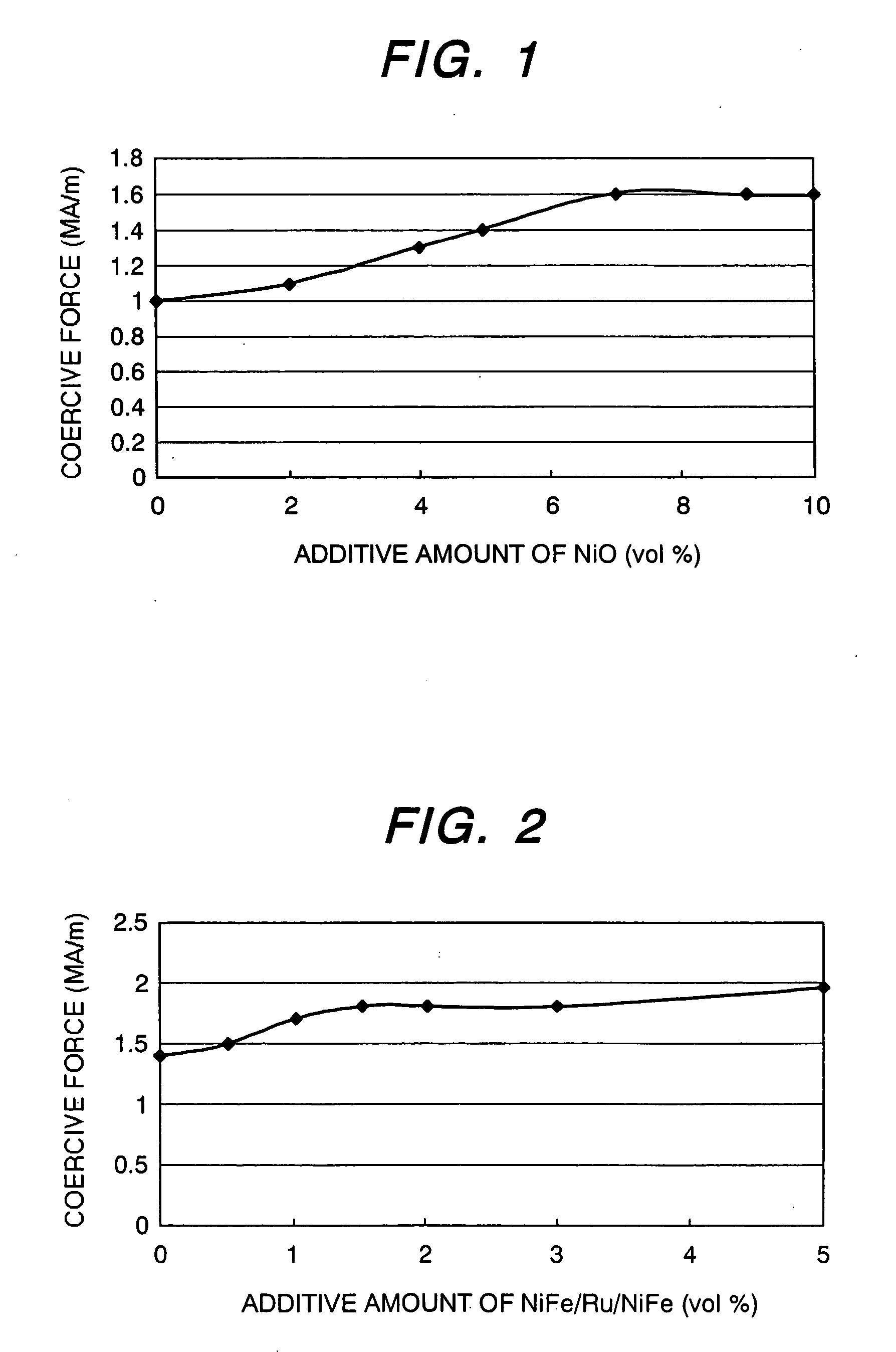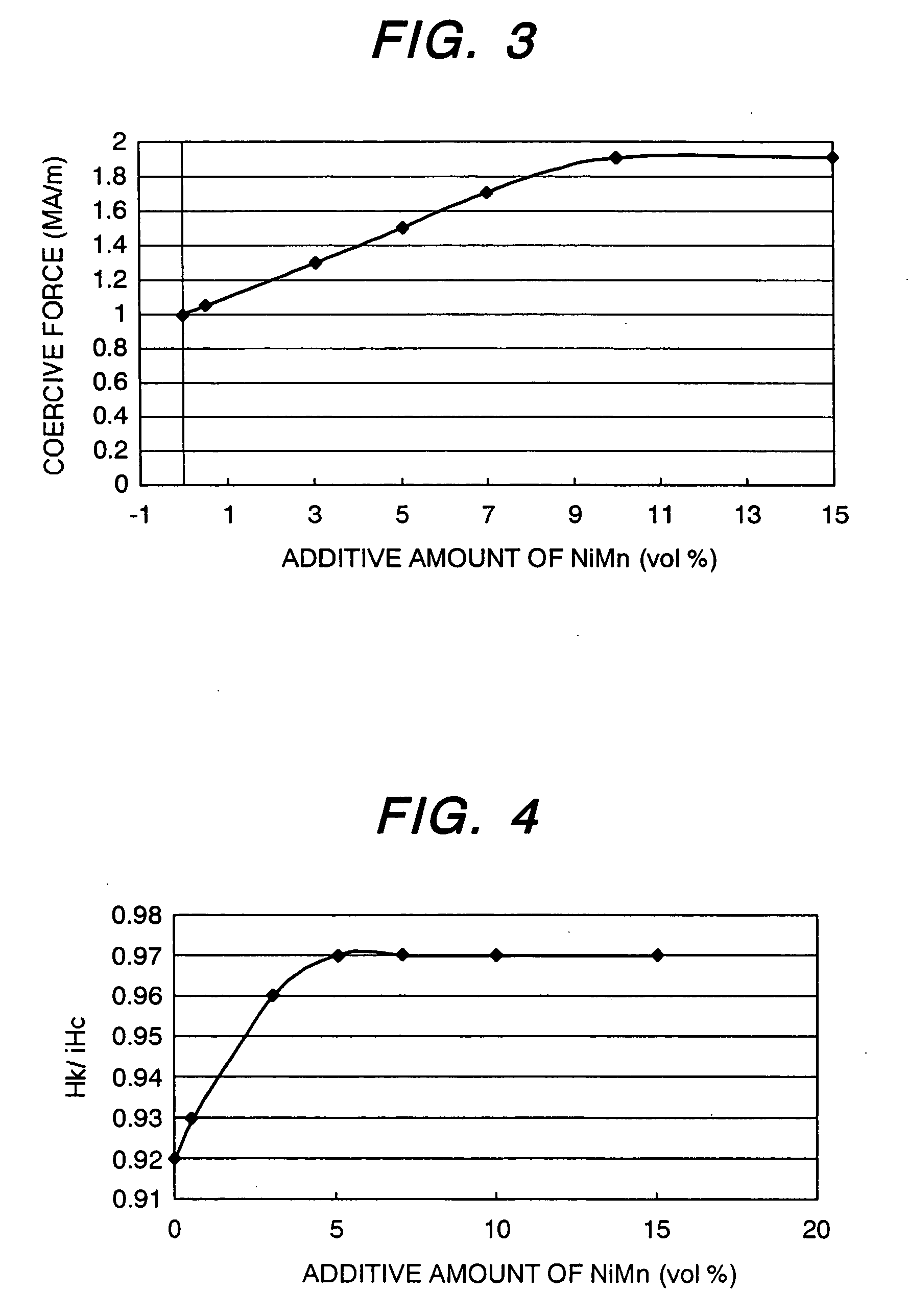Motor using magnet
a magnet and motor technology, applied in the direction of magnetic circuit rotating parts, magnetic body, magnetic circuit shape/form/construction, etc., can solve the problems of low temperature characteristics and residual magnetic flux density of hard magnetic materials disclosed in physical review b, and achieve improved coervic force, increased residual magnetic flux density, and improved energy product
- Summary
- Abstract
- Description
- Claims
- Application Information
AI Technical Summary
Benefits of technology
Problems solved by technology
Method used
Image
Examples
example 1
[0038] In this example, Nd was chosen as a rare earth element, and raw materials were selected to prepare Nd2Fe14B. The raw materials were melted and alloyed by high frequency induction heating. In this case, Nd was added in 5% by weight excess in the raw material composition so as to compensate its loss during heating.
[0039] Then, the alloy was crashed by a stamp mill or jaw crasher to produce rough powder of a mean grain size of 100 micrometers. Thereafter, the powder was further ground to powder of a mean particle size of 3 to 5 micrometers. The final grinding can be carried out by means of a ball mill. The resulting powder was subjected to hydrogen treatment at 400 to 850° C. to remove oxides on the surface of the particles.
[0040] In another method, magnetic powder containing at least one rare earth element is kept at a temperature of 400° C. or higher in a hydrogen atmosphere, then hydrogen is removed. The resulting treated powder is further ground to obtain magnetic fine pow...
example 2
[0046] The second Example will be explained. As rare earth elements, Nd and Dy were selected to prepare a raw material composition consisting of (Nd,Dy)2Fe14B. The raw material composition was melted and alloyed by an induction heating.
[0047] An additive amount of Dy was 0.5 to 1.0% by weight per Nd. Nd and Dy were added in an excess amount by about 5% by weight to compensate their loss at the time of heating.
[0048] Then, the alloy was crashed by a stamp mill or a jaw crasher to obtain a rough powder of 100 micrometers on average. Thereafter, the powder was ground by a jet mill to obtain fine powder of 3 to 5 micrometers on average. A ball mill can be used for the final grinding.
[0049] The fine powder was treated at 600 to 850° C. in a hydrogen atmosphere to remove oxides on the surface of the grains. Then, the powder was mixed with the anti-ferromagnetic powder. The anti-ferromagnetic material was NiFe / Ru / NiFe.
[0050] A laminate was prepared by an atomizing method. The materials...
example 3
[0055] The next example will be explained. As the anti-ferromagnetic material, manganese alloys were chosen. Gas atomizing methods or liquid quenching methods were employed to prepare manganese alloy powder. The manganese alloys are exemplified as NiMn, FeMn, PdMn, IrMn and PtMn. In case of NiMn, a regular phase is formed, while in other cases, irregular phases are formed. The average particle size of the above manganese alloys was 1 to 5 micrometers. The smaller the particle size, the higher the coercive force can be obtained.
[0056] The case where NiMn is used will be explained below. A gas atomizing method for atomizing Ni—Mn alloy can produce a Ni—Mn alloy powder of Ni 50% by volume (±1%)-Mn as being balance of an average particle size of 1 to 5 micrometers. The resulting powder was mixed with magnetic powder containing at least one rare earth element and having an average particle size of 5 to 100 micrometers.
[0057] A v-mixer or ball mill was used for mixing the powders in vac...
PUM
| Property | Measurement | Unit |
|---|---|---|
| magnetization direction | aaaaa | aaaaa |
| atomic numbers | aaaaa | aaaaa |
| particle size | aaaaa | aaaaa |
Abstract
Description
Claims
Application Information
 Login to View More
Login to View More - R&D
- Intellectual Property
- Life Sciences
- Materials
- Tech Scout
- Unparalleled Data Quality
- Higher Quality Content
- 60% Fewer Hallucinations
Browse by: Latest US Patents, China's latest patents, Technical Efficacy Thesaurus, Application Domain, Technology Topic, Popular Technical Reports.
© 2025 PatSnap. All rights reserved.Legal|Privacy policy|Modern Slavery Act Transparency Statement|Sitemap|About US| Contact US: help@patsnap.com



